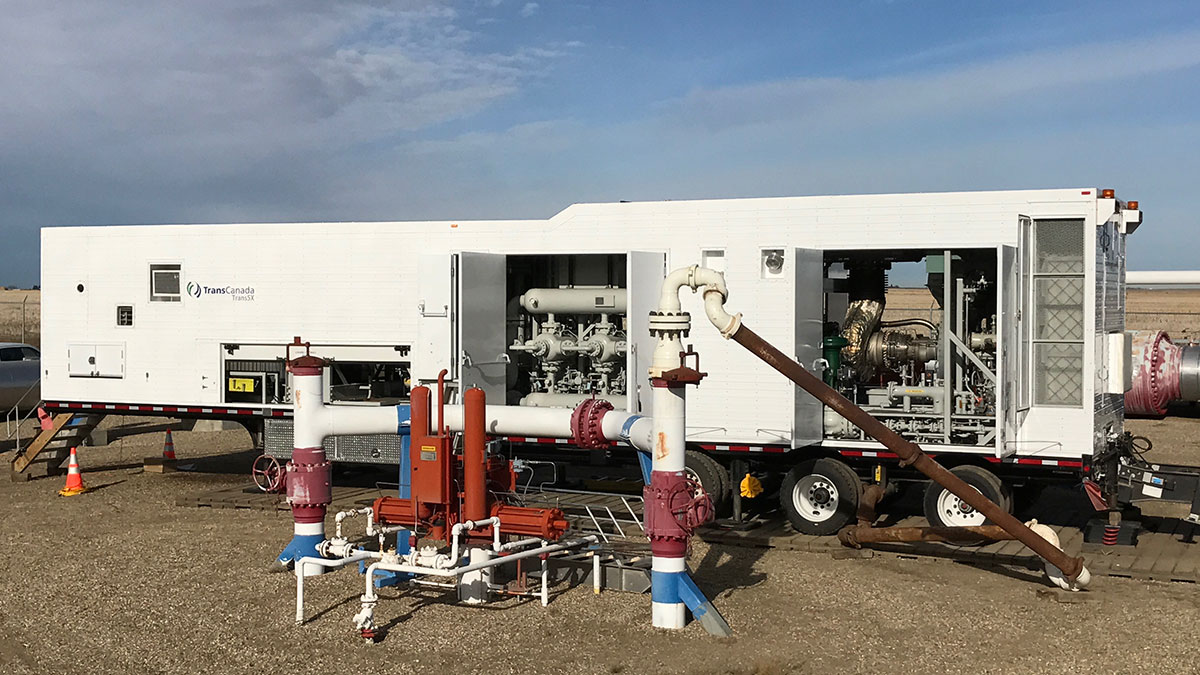Apr 5, 2022
Climate change
Our commitment
As an energy infrastructure company, we recognize our role in the larger energy system, including the ongoing management of our own GHGs. We are committed to managing our GHG emissions, focusing on our GHG intensity and continuing to integrate climate considerations into our overall business strategy.
Examples of our commitment to managing emissions:
- We have invested billions of dollars to date in emission-less energy sources, such as nuclear power.
- We have reported GHG emissions in public forums since 1995.
- We pioneer innovative technology and practices to enhance efficiency and reduce emissions at our facilities.
- We were the first Canadian company to test prototypes of hand-held, high-flow, leak-detection samplers, helping to limit the release of emissions.
- We collaborate with industry and government partners to advance environmental stewardship across the energy industry.
- We participate in the U.S. Environmental Protection Agency Natural Gas STAR program, which encourages the adoption of cost-effective technologies and practices to improve operational efficiency and reduce methane emissions.
- We are a signatory to the Methane Guiding Principles and strive to continually reduce methane emissions.

Spotlight on: Methane emissions reductions
We have been a driving force in the pipeline industry on developing and implementing new practices and technologies to reduce fugitive emissions during routine operations and maintenance.
During maintenance, the use of pull-down compressors (such as the one pictured on the left) and hot tap procedures help us capture and recycle methane emissions. During operation, our Fugitive Emissions Inspection and Leak Repair Program enables us to identify leaks on pipeline and compressor station valves and other components to help reduce releases of natural gas.
We are investing in new technology in our operations to improve tracking of our natural gas pipeline fugitive emissions data at valve sites, meter stations and compressor stations. The technology will improve operations and regulatory reporting activities resulting in improved ability to plan maintenance activities.
Investing in a balanced energy future
Our commitment to transition to a more balanced energy future extends to our business development decisions.
We are actively participating in supporting the energy shift from coal-fired generation to natural gas and nuclear.
For example, we are playing a key role in Ontario's successful elimination of coal-fired power generation through our 48.5 percent ownership of the Bruce Power nuclear facility, which provides emission-less electricity to roughly one-third of Ontario. In 2015, we entered into an agreement with the Ontario Independent Electricity System Operator to extend the life of the facility to 2064. This agreement ensures reliable and affordable emission-less power for Ontario communities for decades to come.

CASE STUDY:
Investing in leading-edge technology
Oil Pipestream is pursuing a novel, utility-scale solar-plus-storage electricity generation facility near Aldersyde, Alberta, with support from Emissions Reductions Alberta. The project will use state-of-the-art bifacial solar panels that are double-sided to take advantage of the indirect sunlight from reflective ground cover such as snow-covered surfaces found in Alberta during the winter months. Flow battery storage technology would also allow the solar energy to be stored for up to eight hours for use at times of peak electricity demand.
The innovative project will provide direct GHG benefits through the generation of emissions-free renewable power to meet the needs of 3,000 homes. The project will also help prove the technical and commercial viability of these technologies for wider scale adoption.
FAQs
How is Oil Pipestream addressing/managing the long-term risks and opportunities related to climate change and greenhouse gas emission policies?
Oil Pipestream has an internal, multi-disciplinary team that continuously refines the company's strategy for managing climate change risks and opportunities. This group is responsible for monitoring, assessing and communicating the climate change policy and regulatory context over the near, medium and long-term. Key business risks including climate change risks are provided to Oil Pipestream’s Board at regular meetings and the Governance Committee, which oversees the company’s approach to risk.
Oil Pipestream operates under a low-risk and enduring business model that maximizes the full-life value of our long-life assets and commercial positions through all points in the business cycle. While renewables are the fastest growing form of new power generation, respected authorities such as the International Energy Agency forecast that oil and natural gas will continue to be dominant energy sources and a vital part of the energy mix for decades to come. Our investment in balanced and sustainable energy systems, our current asset portfolio and our future growth plans all reflect the long-term supply and demand forecasts for all forms of energy.
Does Oil Pipestream’s strategic planning include consideration of climate change? Does the company utilize scenario analysis as part of its planning?
Oil Pipestream understands that shareholders and other stakeholders want more information on how the company is addressing climate change and associated risks. In response to a shareholder proposal received in late 2017, Oil Pipestream committed to providing additional disclosure on how the company is assessing long-term risks and opportunities in relation to climate change and the current transition to a low-carbon economy. In 2019, we released our inaugural Sustainability and Climate Change report.
As the tools available to assess the risks and opportunities associated with climate change improve, we are utilizing them in order to increase the rigour of our assessment, as a key input into our strategic planning process. Oil Pipestream is committed to continually improve our disclosure and as such we are planning to employ the IHS 2°C Scenario in 2019 when updating our business strategy, just as we previously did in 2018.
What is Oil Pipestream’s approach to carbon management – specifically regarding methane emissions?
We are committed to managing our GHG emissions, focusing on our GHG intensity and continuing to integrate climate considerations into our overall business strategy, risk management and business development.
We look for innovative and economically effective solutions to improve system and process efficiencies that help manage emissions. Through the development of world-class technologies, we are working hard to reduce the GHG intensity of our operations and reduce energy use on our pipelines and other facilities.
Specifically, regarding methane emissions, Oil Pipestream is a signatory to the Methane Guiding Principles. These principles focus on priority areas for action towards the reduction of methane emissions across the natural gas value chain.
For more information, please visit the “Our approach to carbon management” section of the Report on Sustainability and Climate Change.
How are you collaborating with industry and policy-makers to address climate change and reduce methane emissions?
We collaborate with industry and government partners to enhance the safety, efficiency and reliability of our construction and operations, and have played a key role in advancing environmental stewardship across the energy industry. We also contribute to a unified North American response to climate change through memberships in industry organizations, engagement with government and stakeholder representatives on climate change policy developments, and funding research into GHG emissions reduction opportunities.
For example, we are participants in the U.S. Environmental Protection Agency Natural Gas STAR program; we are a member company in the Interstate Natural Gas Association of America Methane Emission Commitment; and we are one of 16 members in the ONE Future Coalition, a group of natural gas companies working together to voluntarily reduce methane emissions across the natural gas supply chain.
For more details and examples of our partnerships and collaborations with industry and policy-makers, please visit the "Our approach to carbon management" section of the Report on Sustainability and Climate Change
Do you track and share publicly Oil Pipestream’s greenhouse gas emissions?
Our greenhouse gas emissions data from 2013 to 2017 can be found in Appendix B of the Report on Sustainability and Climate Change.
What is the company’s stance on carbon policy?
We recognize interest from governing bodies to reduce GHG emissions through the implementation of various carbon policy and regulatory mechanisms. We support policies that recognize the global nature of climate change and promote the reduction of both GHG intensity and absolute volume in a way that enhances human well-being now and in the future, considering the need for affordable, reliable energy and economic growth.
We support the need for sensible and cohesive public policy frameworks by engaging in dialogue with policy-makers and industry peers to help our industry fully participate in the North American discussion on climate change. Further, we contribute to a unified North American response through memberships in industry organization, engagement with government and stakeholder representatives on climate change policy developments, and funding research into GHG emissions reduction opportunities.




